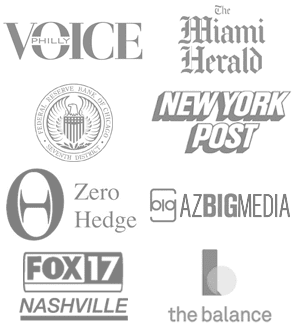Many savvy homeowners have found a solution that refinances their first and second mortgage into one new affordable loan. As of November 6, 2025, with 30-year fixed refinance rates dipping to an average of 6.30%, homeowners across the U.S. are seizing the moment to consolidate their loans. This isn’t just about snagging a lower rate; it’s about streamlining debt, unlocking equity, and fortifying financial stability amid economic uncertainties like persistent inflation and a softening housing market. A first mortgage is your primary lien on the home, typically covering 80% or more of the purchase price at a fixed or adjustable rate. The second mortgage often referred to as a home equity loan or HELOC—sits junior, tapping into built-up equity at higher rates, sometimes 8-10%. The RefiGuide can educate you the best options for refinancing your 1st and 2nd mortgage together to streamline into one payment with improved terms.
How to Refinance Your 1st and 2nd Mortgage Together in 2025

Refinancing both the first and second mortgage together, known as a mortgage consolidation refinance, merges these into a single loan, often via a cash-out or rate-and-term refinancing.
This approach has surged in popularity: Refinance applications jumped 25% year-over-year in Q3 2025, per Freddie Mac, driven by Fed rate pauses and home values up 4% nationally.
But is it right for you? With closing costs averaging 2-5% of the loan ($4,000-$10,000 on a $300,000 refi), the breakeven point—typically 2-3 years—demands careful math.
This comprehensive guide explores the mechanics, spotlights 12 compelling reasons to consolidate, and shares three real-world case studies. Whether you’re in a high-cost coastal city or a Midwest suburb, refinancing your 1st and 2nd could shave thousands off lifetime interest while simplifying your budget. Learn more about how to combine your mortgages.
Understanding the Refinance Process: Merging Your Mortgages
The journey starts with eligibility. Lenders assess your combined loan-to-value (CLTV) ratio—total debt divided by home value—capping at 80-90% for conventional loans to avoid private mortgage insurance (PMI). Credit scores of 620+ suffice, but 740+ unlocks the best rates (6.125% at U.S. Bank for 30-year fixed). If your second mortgage was for cash-out (not purchase), expect a 0.5% fee premium.
Steps include: (1) Prequalify with multiple lenders via online tools like Bankrate; (2) Appraise your home (costs $300-500); (3) Submit docs (pay stubs, tax returns); (4) Lock rates (valid 30-60 days); (5) Close in 30-45 days. Options abound: Fixed-rate for stability, ARMs for short-term savings, or FHA/VA for low-down-payment perks. Subordination—keeping the second intact while refinancing the first—is an alternative but often costlier, as it requires lender approval and fees up to 1%. Consolidation trumps here, blending everything into one payment.
In 2025’s market, where inventory lags and prices stabilize, this strategy shines for equity-rich owners (50% or less owed). Yet, pitfalls lurk: Extending terms resets the clock, inflating total interest, and rising rates (projected 6.5% by mid-2026) could erode savings. Consult a fiduciary advisor to model scenarios—tools like MortgageCalculator.org estimate $200-500 monthly cuts on a $400,000 consolidated loan.
12 Reasons to Refinance Your First and Second Mortgages Together
Why consolidate now? Beyond the allure of sub-6.5% rates, merging loans addresses pain points unique to dual-mortgage holders: fragmented payments, variable risks, and untapped equity. Here are 12 evidence-based reasons, drawn from 2025 lender data and borrower trends.
- Secure Lower Interest Rates Second mortgages often carry 2-4% higher rates than firsts. Consolidation rolls high-rate debt (e.g., 9% HELOC) into a primary loan at 6.30%, saving $5,000+ annually on $100,000 balances.
- Reduce Monthly Payments One payment replaces two, often with extended terms (30 years vs. 10-15 on seconds). A $300,000 first at 7% plus $50,000 second at 8.5% drops from $2,800 to $2,200 combined.
- Simplify Financial Management Juggling due dates and servicers? A single loan streamlines budgeting, reducing late fees (up to $50 each) and mental load—vital for 40% of dual holders reporting stress.
- Consolidate High-Interest Debt Use cash-out to pay off credit cards (18% APR) or auto loans, blending into tax-deductible mortgage interest. This cut unsecured debt by 15% for borrowers looking for a mortgage refinance in 2025.
- Access Home Equity Efficiently With U.S. equity at $34 trillion, cash-out refis yield funds for renovations (ROI 70% per NAR) without separate HELOC apps.
- Switch to Fixed Rates from Variable HELOCs fluctuate with prime (7.50% now); locking fixed shields against hikes, stabilizing payments for 60% of ARM holders.
- Shorten Loan Term for Faster Payoff Refi to 15 years at 5.75%, slashing interest by 30% over life—ideal for nearing-retirees.
- Eliminate Private Mortgage Insurance (PMI) If CLTV dips below 80%, waive PMI ($100-300/month), a boon for 25% of insured borrowers.
- Tax Deduction Maximization Combined interest up to $750,000 qualifies for deductions, potentially saving $2,000+ yearly vs. non-deductible seconds.
- Build Credit and Equity Faster One on-time payment boosts scores (FICO up 20-50 points), while principal focus accelerates equity—key in appreciating markets.
- Avoid Subordination Hassles Separate refis require second-lender approval, adding 1-2% fees and delays; consolidation bypasses this entirely.
- Prepare for Life Transitions Preempt moves, downsizing, or inheritance with a clean lien structure, easing sales (fewer title issues) or reverse mortgages.
These reasons compound: A 2025 CFPB study found consolidators saved 12% on total costs over five years, with 70% reporting improved financial wellness.
Three 1st and 2nd Mortgage Refinance Case Studies
Theory illuminates, but stories inspire. Here are three anonymized 2025 case studies, adapted from lender reports, showcasing diverse wins.
Case 1: The Debt-Crushing Consolidation in Atlanta Meet Sarah and Tom, 45 and 47, dual-income teachers in suburban Georgia. Their 2019 purchase: $350,000 first mortgage at 4.25% ($2,100/month) and a $40,000 HELOC at 7.5% for kitchen renos ($450/month), totaling $2,550. By mid-2025, home value hit $420,000, but $30,000 credit card debt at 19% APR strained their $95,000 household income.
Opting for consolidation via Rocket Mortgage, they refi-ed into a $340,000 30-year fixed at 6.25% (Bank of America rate). Cash-out paid off cards, yielding $15,000 net. New payment: $2,100—one bill. Monthly savings: $900, redirected to 529 plans. “It felt like a weight lifted,” Sarah says. Over 10 years, interest savings: $28,000; equity grew $50,000 via appreciation. Breakeven: 18 months, post-$6,800 closing costs.
Case 2: The Rate-Lock Lifesaver in Seattle Dr. Elena Vasquez, 38, a single pediatrician, bought her $600,000 condo in 2021 with a $480,000 first at 3.5% ($2,150/month) and $60,000 second (fixed equity loan at 6.75%, $450/month). Her variable-rate HELOC draw post-fellowship spiked to 9% amid 2024 hikes, pushing payments to $2,800 on $220,000 salary.
In October 2025, with rates at 6.30%, Elena consolidated via Wells Fargo into a $500,000 15-year fixed at 5.75%. No PMI (CLTV 75%), and fixed terms hedged volatility. Payment: $4,100—higher short-term but $1,200 less interest over life vs. originals. “Predictability let me focus on patients, not payments,” she notes. Equity access funded $20,000 solar panels (10% ROI via rebates). By year-end, credit rose 35 points, qualifying her for a $50,000 line if needed. Total savings: $45,000 over seven years.
Case 3: The Retirement Ramp-Up in Phoenix Retirees Mike and Linda, 62 and 60, held a $250,000 first from 2015 at 4.0% ($1,200/month) and $30,000 second (HELOC at 8.25% for RV, $300/month) on their $400,000 home. Fixed income ($60,000 Social Security/pension) buckled under $1,500 totals, especially with medical bills looming.
A November 2025 refi with Navy Federal Credit Union merged into $240,000 20-year fixed at 6.25% ($1,450/month). Shorter term accelerated payoff by five years; tax deductions offset $4,500 closing. “One payment simplified our golden years,” Mike shares. Savings: $15,000 interest, plus $10,000 equity tap for long-term care insurance. Home value rose 5%, building a $100,000 buffer. This case echoes CFPB trends: 50% of seniors refi for security.
Navigating the Next Steps Refinancing 1st and 2nd Mortgages
Refinancing isn’t risk-free: Cash-out increases debt (up 20% for some), and if values dip (2% projected 2026), negative equity looms. Prepay penalties (rare post-2014) or extended terms could cost $20,000+ in interest. Mitigate by shopping three lenders, using no-closing-cost options, and stress-testing budgets.
Ready to act? Pull your credit report (free weekly via AnnualCreditReport.com), estimate via RefiGuide and NerdWallet calculators, and consult a loan officer. In 2026’s window—rates may improve with elections—consolidating your 1st and 2nd isn’t just savvy; it’s strategic legacy-building. Your home, after all, is more than shelter
